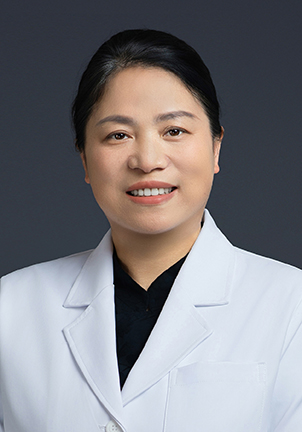Electromyography
Overview
Established in 1994, the SRRSH Department of Electromyography functions as a complete hub for education, research, and clinical practice. The department operates at Qingchun, Qiantang, Grand Canal, and Shaoxing campuses. It is equipped with eight electromyography (EMG) instruments, one quantitative sensory test (QST) instrument, and six transcranial color Doppler (TCD) devices. The department provides more than thirty neurophysiological tests, and its services are utilized by departments of Neurosurgery, Thoracic Surgery, Neurology, Orthopedics, Endocrinology, Psychiatry, and Dermatology. The department has created a well-formed, methodical, and standardized approach to diagnostic methodologies and report writing because of its vast experience in clinical diagnostics. With an annual outpatient volume of over 40,000 visits, it has trained hundreds of trainees across the nation over the years.
Relying on the platform of Zhejiang University, the department has become a leading neurophysiological examination center in China. The team consists of 13 members, including 1 senior technician and 6 professionals with master's degrees. With a balanced academic and technical structure, the team combines strong expertise with youthful energy. It aims to rank among the top domestic and internationally renowned neurophysiological centers!
Technical advantages
Transcranial color Doppler (TCD) testing and electromyographic evoked potentials comprise the two main areas of expertise within the department. Electromyographic evoked potentials:
These tests include single-fiber electromyography, repetitive electrical stimulation, F wave, H-reflex, blink reflex, nerve conduction velocity, somatosensory evoked potential, brainstem evoked potential, visual evoked potential, motor evoked potential, and other standard procedures. They are primarily utilized for pre-and post-operative diagnoses of cervical and lumbar spondylosis, peripheral nerve compression, and the electrophysiological diagnosis of motor neuron illnesses, myasthenia gravis, peripheral neuropathy, myopathy, and other common conditions. The agency also provides several leading services, including:
1. The application of heart rate variability and skin sympathetic response to mental illnesses such bipolar disorder, anxiety, and depression.
2. Dystonia electrophysiological diagnosis with acupuncture electromyography and electromyography-guided dystonia therapy.
3. The diagnosis of hemifacial spasm using lateral potential.
4. The identification of many pelvic floor problems, such as neurogenic bladder, constipation, fecal incontinence, anal pain, and perineal pain, as well as combined pelvic floor electrophysiology for pre-and post-operative examination of prostate and colon cancer.
5. Trigeminal nerve problem localization and diagnosis.
6. Tremor analysis to distinguish between essential, dystonic, functional, and Parkinson's disease tremors.
7. Examination and treatment methods using laryngeal muscle electromyography in conjunction with otolaryngology. These specialist services are acknowledged as leaders in the country in the field.
- Transcranial color Doppler:
In addition to routine examinations of intracranial and extracranial vessels and diagnosis of vascular obstructive lesions, TCD is also used for preliminary screening of patients with symptoms such as dizziness and transient loss of consciousness. Furthermore, the department provides the following specialized tests:
1. Diagnosis of extracranial vascular occlusive disease (especially chronic ICA occlusion) combined with a common carotid artery compression test to evaluate collateral circulation.
2. Evaluation of extracranial vascular diseases (e.g., cervical artery stenosis, subclavian steal syndrome) and their impact on intracranial blood flow velocity. Collateral circulation of the Circle of Willis is also assessed. Monitoring is carried out intermittently for conditions such as spontaneous intracranial hypotension, vasospasm after subarachnoid hemorrhage, vasospasm or hyperperfusion in migraine, acute stroke, spontaneous recanalization after intracranial vascular occlusion or treatment, changes in blood flow during anticoagulant therapy, and blood viscosity changes.
3. Detection of microemboli in cerebral blood flow.
4. Cerebral blood flow bubble test: Cryptogenic cerebral infarction, migraines, and decompression sickness may be linked to right-to-left shunt caused by a patent foramen ovale (PFO). TCD technology is also used to screen for PFO in these cases.
5. Hemodynamic test (bundle arm test): When subclavian artery (SubA) stenosis and subclavian steal syndrome (SSS) are suspected, the test determines the presence of steal blood flow and identifies potential steal pathways.
6. Brain death confirmation test.
These tests are leading the field within the province.
Academic status
Designated resident training base of the National Health Commission
Official appraisal unit for several judicial appraisal centers
Research achievements
Since 1997, the department has been involved in 2 projects funded by the National Natural Science Foundation of China and 1 major project by the Department of Science and Technology. It has also undertaken 1 provincial fund project and 3 bureau-level projects, with dozens of papers published in both national and international academic journals.















